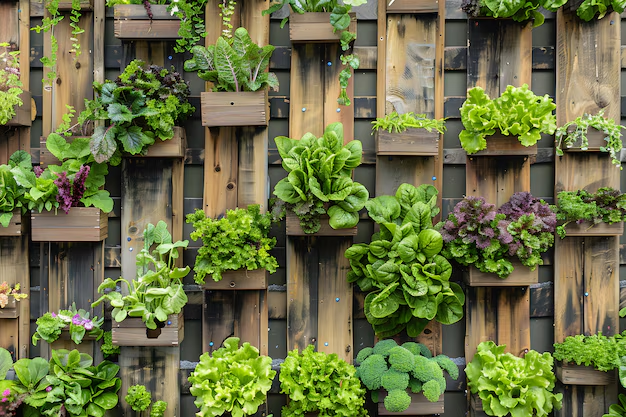In today’s urban landscape, where space is a luxury, DIY vertical gardening has emerged as a game-changer for those who want to grow their own fruits, vegetables, and flowers without sacrificing precious floor space. This innovative method not only maximizes space but also enhances the aesthetic appeal of your home while providing numerous environmental benefits. Let’s dive into the world of vertical gardening and explore how you can create your own thriving green wall.
Introduction to Vertical Gardening

Vertical gardening involves growing plants upwards using structures like walls, trellises, or specially designed planters. This technique is perfect for small indoor spaces, allowing you to utilize wall space effectively and free up floor area for other uses. Whether you’re looking to grow a kitchen garden or simply add some greenery to your home, vertical gardening offers a versatile solution.
Benefits of Vertical Gardening
- Space Maximization: One of the most significant advantages of vertical gardening is its ability to make the most of limited space. By using walls, you can grow multiple plants in a small area, making it ideal for urban dwellers.
- Air Quality Improvement: Vertical gardens help purify indoor air by absorbing pollutants and releasing oxygen, contributing to a healthier environment.
- Aesthetic Appeal: These gardens add a touch of nature and beauty to your home, enhancing its visual appeal and creating a soothing ambiance.
- Environmental Benefits: They act as a protective shield against excess heat, noise, and UV rays, while also providing insulation and reducing energy consumption.
- Stress Relief: Being surrounded by plants has been shown to reduce stress levels and promote psychological well-being.
Steps to Set Up a DIY Vertical Garden

Setting up a vertical garden is easier than you think. Here’s a step-by-step guide to help you get started:
- Select a Wall: Choose a wall that receives adequate sunlight and is suitable for plant growth. This could be a balcony wall or any other area with good conditions.
- Create the Frame: Use PVC pipes to build a sturdy frame. PVC is preferred over metal or wood as it is resistant to moisture and environmental changes.
- Attach a Plastic Sheet: This helps prevent moisture from reaching the wall and ensures the longevity of your setup.
- Add Fabric Layers: Use two layers of fabric to retain moisture and provide a medium for plant growth.
- Install Irrigation System: A self-watering system is ideal for maintaining your garden, especially when you’re away from home.
- Attach Pots or Pouches: Use specialized pots designed for vertical gardening and arrange them vertically to create your green wall.
- Plant Selection: Choose plants that thrive in vertical conditions, such as climbers like cucumbers and tomatoes, and smaller plants for the top layers.
- Maintenance: Regularly check the moisture levels and ensure proper air circulation for healthy plant growth.
- Fertilization: Use liquid fertilizers to promote plant health and growth.
- Enjoy Your Harvest: Once your plants are mature, enjoy the fruits of your labor!
Tips for a Thriving Vertical Garden

- Lighting: Ensure your plants receive sufficient sunlight. If natural light is limited, consider using grow lights.
- Watering: Monitor moisture levels to prevent overwatering, which can lead to root rot.
- Pest Control: Regularly inspect your plants for pests and use organic pest control methods when necessary.
Also Read : Smart Home Trends: How Technology Is Changing Home And Garden Design
Conclusion
DIY vertical gardening is an exciting and rewarding project that not only beautifies your space but also contributes to a healthier environment. By following these simple steps and tips, you can create a lush green oasis in even the smallest of spaces. Whether you’re a seasoned gardener or a beginner, vertical gardening offers a unique opportunity to grow more in less space, making it a perfect solution for urban gardening enthusiasts.
FAQs
What are the best plants for a vertical garden?
Climbers like cucumbers, tomatoes, and melons work well, along with smaller plants for top layers.
How often should I water my vertical garden?
Check moisture levels regularly to avoid overwatering.
Can I use recycled materials for my vertical garden?
Yes, materials like plastic bottles and old shoe organizers can be repurposed.
How does vertical gardening improve air quality?
It absorbs pollutants and releases oxygen, contributing to cleaner indoor air.
Is vertical gardening suitable for indoor spaces with limited sunlight?
Yes, you can use grow lights to supplement natural light.

